Invited Speakers
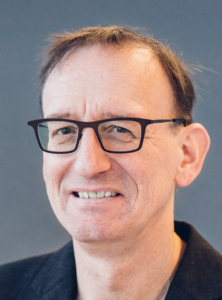
Marius Ader
CRTD/TU Dresden, Germany
With a background in neurobiology and stem cells, Marius Ader is dedicated to the development of cell-based treatment strategies for incurable retinal degenerative diseases. His team at the Center for Regenerative Therapies Dresden (CRTD), TU Dresden (Germany), pioneered proof-of-concept studies for retinal repair by photoreceptor and retinal pigment epithelium transplantation in pre-clinical animal models using primary and pluripotent stem cell-derived donor cells generated in retinal organoids. He studied biology at the University of Bielefeld before performing studies at the ETH Zurich and University of Hamburg for his PhD in 2000. After postdoc studies in Hamburg he focused on retina research during his second postdoc from 2003 at Trinity College Dublin, Ireland. In 2008 he started his own group at the CRTD/ TU Dresden where he became professor in 2014.
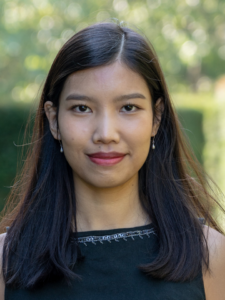
Irene Aji
MPI-NB Bonn, Germany
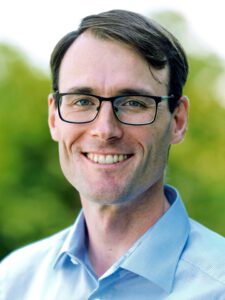
Aristides Arrenberg
U Tübingen, Germany
Ari Arrenberg is professor at the University of Tübingen, where his team studies visuomotor circuits in zebrafish. They have revealed the binocular logic of optic flow processing and characterized (pre-)tectal processing channels that underly optokinetic, optomotor and prey capture behavior. Recent projects investigate active vision and circuit adaptations to natural scene statistics. Furthermore, the lab studies how local networks produce function in the neural integrator for horizontal eye movements in the hindbrain. Ari studied biochemistry and molecular biology in Hamburg before doing his PhD in neuroscience at the University of California San Francisco (2005 - 2010). During his PhD, he investigated oculomotor and locomotor circuits using optogenetics. He moved back with his family to Germany for his postdoc at the University of Freiburg, where he set up a two-photon microscope and studied the dopaminergic system. In 2014 he started his own group at the Werner Reichardt Centre for Integrative Neuroscience (University of Tübingen), where he became professor in the biology department in 2020.
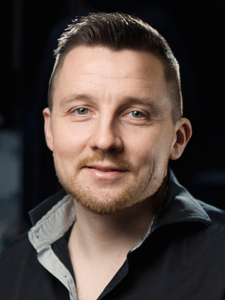
Petri Ala-Laurila
U Helsinki, Finland
Dr. Petri Ala-Laurila is a Professor of Neurobiology at University of Helsinki in Finland and he also runs another laboratory at Aalto University. His team utilizes visual paradigms at extremely low light levels to bridge retinal coding to visually guided behavior in healthy and diseased visual systems. To do so, his team relies on novel stimulus technologies including a single-photon gun, electrophysiological and imaging techniques for studying retinal circuits, human psychophysics and deep-learning based algorithms for tracking freely-moving mice and their eyes. He got his PhD in physics at Helsinki University of Technology working with Kristian Donner and Ari Koskelainen. Then he did two distinct postdoctoral fellowships in the USA: First, he worked with Carter Cornwall in Boston to study the vertebrate visual cycle and later with Fred Rieke at University of Washington and Howard Hughes Medical Institute (HHMI) to study visual processing in the primate retina. He returned to Finland in the year 2012 to establish his own laboratories.
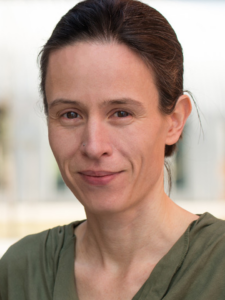
Laura Busse
LMU Munich, Germany
Laura Busse is an Associate Professor at the Faculty of Biology of the LMU Munich, where her lab studies context-dependent processing in thalamocortical visual circuits. She obtained a PhD in neuroscience from the University of Göttingen for her work on the neural mechanisms of visual attention. She joined Matteo Carandini’s lab, first at the Smith Kettlewell Eye Research Institute in San Francisco and then at UCL, as a postdoctoral researcher to work on computations in visual cortex and history-dependent behavior. Laura started her own group at the Centre for Integrative Neuroscience of the University of Tübingen before moving to Munich in 2016.
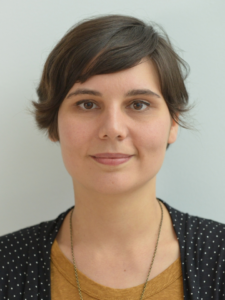
Deniz Dalkara
Paris Vision Institute, France
The main focus of my research has been gene delivery to mammalian cells, first by synthetic vectors and more recently by viruses.
My expertise has evolved from gene and protein delivery in a purely biotechnological context to gene therapy for inherited retinal degenerations using viral vectors. I lead a team who currently specializes on bioengineering approaches to create better gene delivery vehicles, and their application both understanding the retina and experimental gene therapy. Our skills include targeted delivery of optogenetic tools for vision restoration as well as development of delivery strategies for other innovative gene therapeutic approaches.
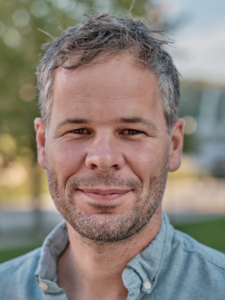
Max Jösch
ISTA, Austria
Maximilian Jösch was born in Viña del Mar, Chile. He studied astronomy at the Pontificia Universidad de Chile and biochemistry at the University of Tübingen. He performed his doctoral studies at the Max Planck Institute of Neurobiology, Martinsried, working on fly motion vision with Alexander Borst. He then conducted postdoctoral research at Harvard University, working on retina coding with Markus Meister and Joshua Sanes. He established his research group at the Institute of Science and Technology Austria (ISTA) in 2017, where he and his team studied the neuronal basis of innate behaviors, i.e., the processes implemented by neuronal circuits to transform sensory information into motor commands. Using a combination of molecular and physiological approaches, they monitor brain activity during animal behavior to reveal the principles and motifs of neuronal computation and visuomotor processing.
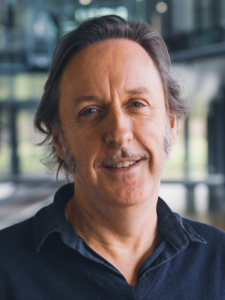
Jason Kerr
MPI-NB Bonn, Germany
Jason Kerr is director of the Department Behavior and Brain Organization (BBO) of the Max Planck Institute for Neurobiology of Behavior. The primary aim of BBO’s research is to understand how freely moving mammals use their vision to make decisions and the neurobiological mechanisms that underlie this process. BBO lab develops head-mounted 3-photon microscopes for imaging neural activity across all cortical layers, head, skeleton, and eye tracking techniques for high-resolution quantification of behavior in multiple species, and computational approaches to reconstruct an animal’s visual field of view during goal-directed free behaviors. The overall aim of this approach is to generate a thorough understanding of mammalian vision by exploring the connection between behavior and neuronal activity. Born in Wellington, New Zealand, Kerr initially studied human anatomy and neurophysiology at the Department of Anatomy and Structural Biology at Otago University in Dunedin, New Zealand. Kerr held two post-doc positions, first at the National Institute of Mental Health in Bethesda, Maryland, and then at the MPI for Medical Research in Heidelberg, before running the Network Imaging Group at MPI for Biological Cybernetics in Tübingen, Germany. In 2013 he was appointed Scientific Member of the Max Planck Society and is a founding director of the Max Planck Institute for Neurobiology of Behavior and Professor at the Rheinische Friedrich-Wilhelms-Universität Bonn, Germany.
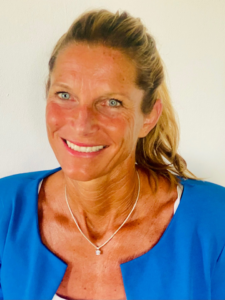
Sonja Kleinlogel
Hoffmann-La Roche / U Bern, Switzerland
Prof. Sonja Kleinlogel is a trained biochemist, with a long-standing track-record in optogenetics, gene therapy and neurophysiology. Sonja led the research group “Translational Optogenetics” at the University of Bern pioneering the fields of optogenetics and vision restoration by engineering light-sensitive designer proteins and retinal gene therapies. She co-founded Arctos Medical AG, sold to Novartis last year. Sonja is passionate about developing innovative technologies and bringing basic research to patients in need.
Sonja Kleinlogel received her MSc degree at the University of Bern working on therapies for the restoration of hearing and completed her PhD studies at the Vision Touch and Hearing Research Centre of the University of Queensland (Australia) working on color and polarization vision. After a Postdoc at the Max-Planck Institute for Biophysics in Frankfurt (Germany), one of the optogenetics founder labs, she was appointed at the University of Bern in 2012 and received tenure in 2018.
Sonja Kleinlogel is committee member of the European “next-generation optogenetics” program and received several innovation prizes, such as the Theodor Kocher Prize, the Euretina Prize and the SwissOphth Award. She is married, mother of two children and lives with her family in the Bern area.
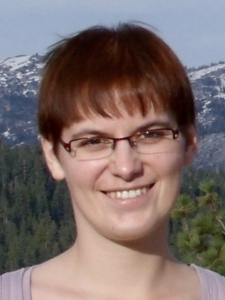
Alexandra Kling
Stanford, USA
I am a research scientist in EJ Chichilnisky laboratory at Stanford University. My projects include studying cell type diversity in macaque and human retinas, functional organization of the receptive fields of primate retinal ganglion cells at single cone resolution, and research of light adaptation effects on mosaics properties of primate retinal ganglion cells.
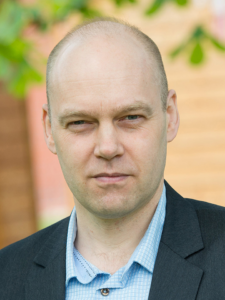
Henrik Mouritsen
U Oldenburg, Germany
Henrik Mouritsen got his PhD at Odense University, Denmark in 1998. After a postdoc at Queen’s University, Canada, he became an independent “Volkswagen Nachwuchsgruppenleiter” in 2002. Five years later, he first became VW Lichtenberg Professor, then full professor of Neurosensory sciences at the University of Oldenburg. He has won several scientific prizes including the Eric Kandel Young Neuroscientist Award 2011 and holds the ERC synergy grant “Quantum Birds” together with Prof. Hore of Oxford University. Henrik studies the mechanisms of orientation and navigation in many different animals with an emphasis on night-migratory songbirds. He is particularly interested in understanding how the magnetic sense works, and currently investigates the hypothesis that the magnetic compass of night-migratory songbirds is based on a fundamentally quantum, radical-pair mechanism inside a cryptochrome protein in the birds’ retina. His group’s approach is highly multidisciplinary with PhD projects rooted in animal behavior, neuroethology, neuroscience, molecular biology, biochemistry, and biophysics. He is the speaker of SFB 1372: “Magnetoreception and Navigation in Vertebrates".
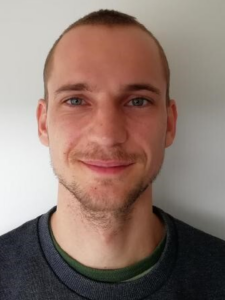
Jonathan Oesterle
U Tübingen, Germany
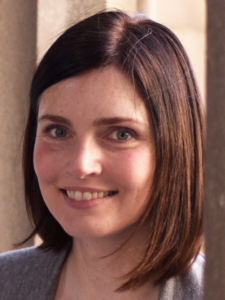
Stephanie Palmer
U Chicago, USA
Stephanie Palmer is an Associate Professor in the Department of Organismal Biology and Anatomy and in the Department of Physics at the University of Chicago. She has a PhD in theoretical physics from Oxford University where she was a Rhodes Scholar, and works on questions at the interface of neuroscience and statistical physics. Her recent work explores the question of how the visual system processes incoming information to make fast and accurate predictions about the future positions of moving objects in the environment. She was named an Alfred P. Sloan Foundation Fellow and holds a CAREER award from the NSF. Starting during her undergraduate years at Michigan State University, Stephanie has been teaching chemistry, physics, math, and biology to a wide range of students. At the University of Chicago, she founded and runs the Brains! Program, which brings local middle school kids from the South Side of Chicago to her lab to learn hands-on neuroscience.
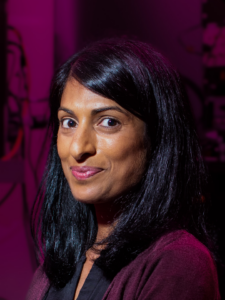
Teresa Puthussery
UC Berkeley, USA
Dr. Teresa Puthussery is an Assistant Professor in the Herbert Wertheim School of Optometry & Vision Science and the Helen Wills Neuroscience Institute at the University of California, Berkeley. She received her PhD in retinal neurobiology at the University of Melbourne before completing postdoctoral training in retinal neurophysiology at Oregon Health & Science University (OHSU). Dr Puthussery’s group combines functional imaging, electrophysiology and molecular methods to understand the structure and function of neural circuits in the retina. Her work also examines how retinal circuits are altered during photoreceptor degeneration.
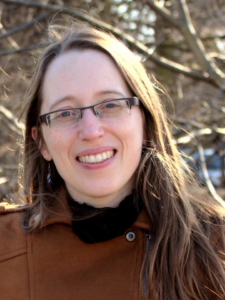
Katja Reinhard
SISSA, Italy
Dr. Katja Reinhard is a group leader at the Scuola Internazionale Superiore di Studi Avanzati (SISSA) in Trieste, Italy. Dr. Reinhard received her PhD from the University of Tübingen in 2016. During her doctoral work in the lab of Dr. Thomas Münch she had studied how visual encoding in the retina differs between species, disease states and ambient light conditions. She then joined the lab of Dr. Karl Farrow at NERF in Leuven to investigate how the superior colliculus integrates visual information and mediates innate behaviours.
Dr. Reinhard started her own group in 2022 to study how flexibility can be generated in innate behaviours. Using probe recordings, calcium imaging, viral tracing and behavioural assays, her lab will investigate how context – including ambient light, circadian rhythm and habitat – impacts innate reactions to threat in rodents from different ecological niches, and how such flexibility in behaviour is mediated by changes in visuo-motor circuits through the superior colliculus.
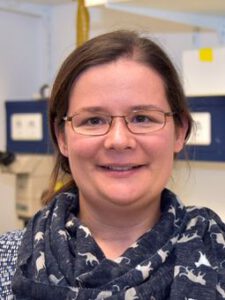
Inês M.A. Ribeiro
LMU Munich, Germany
Inês M.A. Ribeiro studies processing of visual cues used in social interactions. Inês leverages her multi-disciplinary background in genetics, developmental biology, and systems neuroscience, to uncover the cellular and circuit mechanisms underlying behavioral state-dependent processing of visual cues in fruit flies and mayflies. Inês did her undergraduate studies at the University of Lisbon and obtained her PhD in developmental biology at the Salk Institute for Biological Studies. After work on muscle remodeling at UCSD, Inês moved to the Institute of Molecular Pathology in Vienna to study male courtship in Drosophila, a robust behavior easily tested in laboratory conditions and amenable to high-throughput screens using genetic access to single neuron types. Inês continued this work in Janelia Research Campus, Max Planck Institute BI and finally at the LMU-Munich. Her research uncovered a major visual pathway mediating female tracking and salience of fly-like cues during courtship. Inês also developed a light-gated expression tool to tackle the role of spatially arranged neurons in the central brain, used to detect small visual objects. Recently, Inês and her collaboratores uncovered sexual dimorphism in visual neuropils in mayflies, aquatic insects that dedicate their short terrestrial adult stage solely to reproduction, mostly based on visual cues.
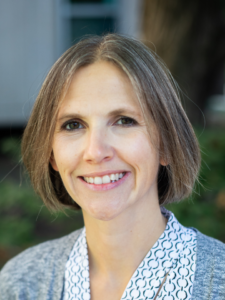
Tiffany Schmidt
Northwestern U, USA
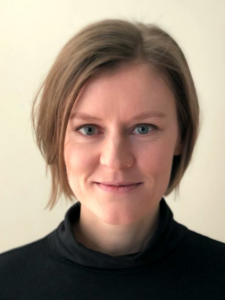
Sylvia Schröder
U Sussex, UK
Dr Sylvia Schröder received a BSc in Cognitive Science from University of Osnabrück, Germany, where she investigated the influences of visual salience and task-relevant visual information on human attention. She received an MSc in Neural Systems and Computation and a PhD at University of Zurich and ETH Zurich, Switzerland, where she studied the functional architecture of cat primary visual cortex showing that spatially nearby neurons, i.e., neurons within the same cortical column, exhibit much higher functional diversity than previously believed. Dr Schröder then joined UCL, UK, to study behavioural modulation of visual responses in the retina and the superior colliculus of mice. She showed that even retinal responses are affected by locomotion and arousal. In 2021, Dr Schröder opened her lab as a Sir Henry Dale Fellow at the University of Sussex, UK. The goal of her lab is to understand how behaviour and internal states influence visual processing in the early visual system including the retina and the superior colliculus.

Karthik Shekhar
University of California, Berkeley, USA
Karthik Shekhar is an Assistant Professor of Chemical and Biomolecular Engineering, and the Helen Wills Neuroscience Institute at the University of California, Berkeley. He obtained his undergraduate degree at the Indian Institute of Technology (IIT) Bombay, his PhD from the Massachusetts Institute of Technology (MIT), and conducted his postdoctoral work at the Broad Institute of MIT and Harvard. Karthik's group combines single-cell genomic measurements and computational approaches to reconstruct the development and evolution of cell types in the visual system.

